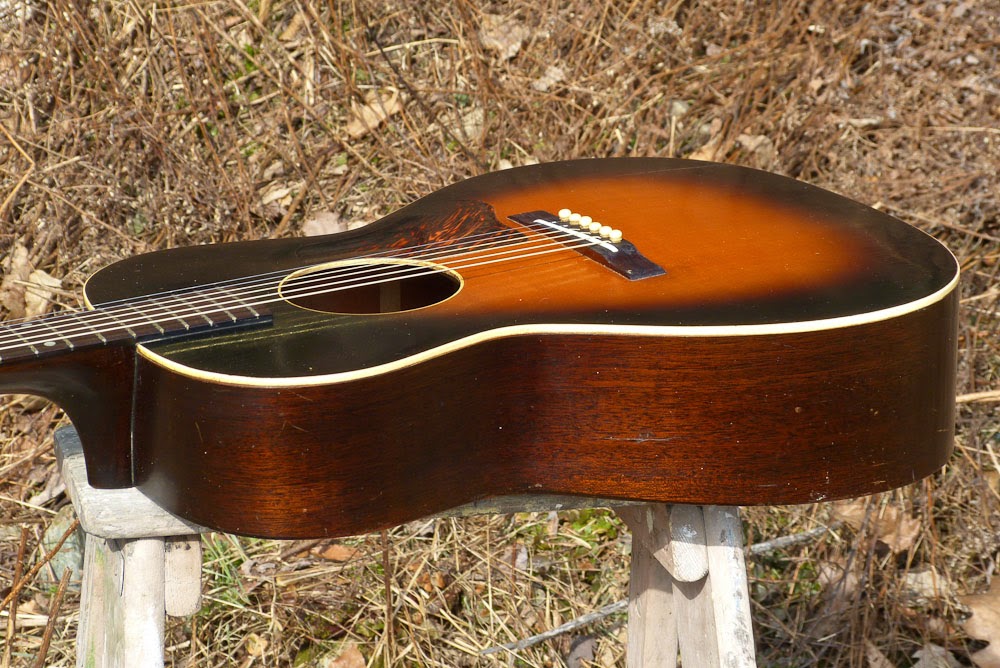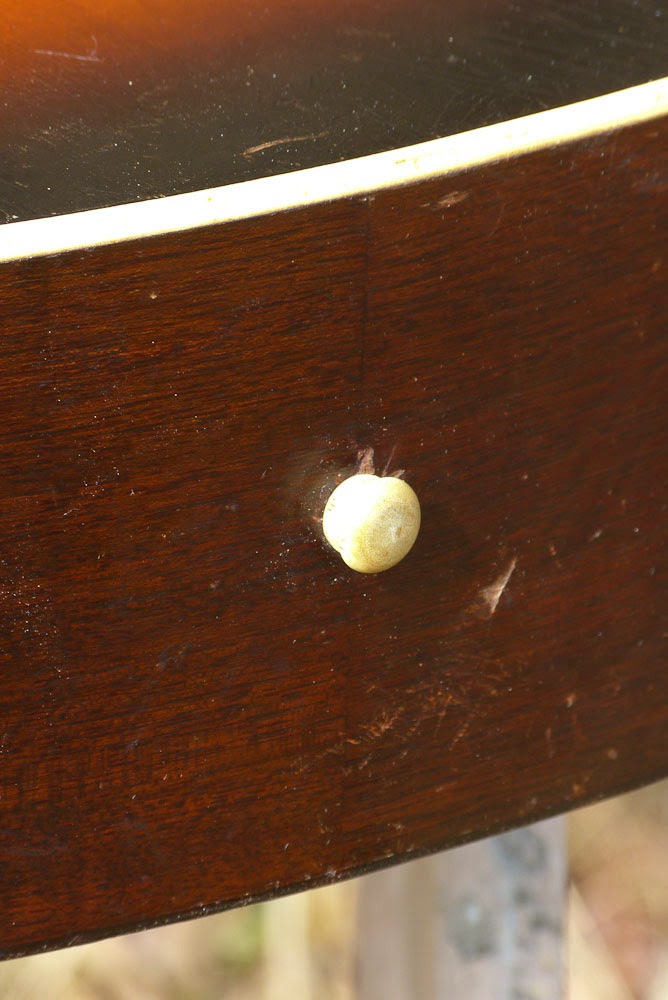1936 Gibson-made Carson Robison KG-14 Guitar
This beautiful old blueser is a customer's guitar and, believe it or not, he and I were bidding on it at the same time on fleaBay -- so I was nicely-surprised when I opened the shipping box and there was the guitar I was excited to work on, anyhow! Despite "Carson Robinson" on the headstock (it was made for Montgomery Wards who also sold Gibson products under the "Recording King" moniker) this was made by Gibson and is exactly the same as same-year Kalamazoo KG-14 models. That is: it's a 14-fret L-00-size body with ladder bracing, solid spruce top, and solid mahogany back, sides, and neck.
These guitars are perfect for old-time or fiddling backup, country blues, fingerpicking, and ragtime sorts of play. If you're a flatpicker looking for some mids-boost to cut through a mix, it'll do that, too. These are almost always very loud on top of everything else.
My work on this included cleating both that obvious lower bout top hairline crack and a pickguard crack, bridge reglue (and sprucing-up), new bone saddle, fret level/dress, cleaning, and setup. She plays spot-on with 3/32" bass and 1/16" treble action at the 12th fret, though I've kept this strung with 50w-11 strings as the neck has a history of warp/twist that was leveled out during fretwork.
Just like the comparable Kalamazoo model (and an L-00 from the time, for that matter), this guitar has a radiused board with a medium-big V-neck and 24 3/4" scale length.
Because this was made in '36, the "peaked" headstock shape was still in use.
The bone nut is original, too, but rare to see on a Gibson "2nd line" instrument. They tended to have ebony nuts.
Pearl dots are in the board... as well as the usual Gibson smallish fretwire from the time.
The firestripe pickguard and simply-bound rosette are too cool.
There's a B-suffix factory order number (FON) stamped on the neckblock that indicates 1936 manufacture.
There's a B-suffix factory order number (FON) stamped on the neckblock that indicates 1936 manufacture.
This bridge came in with two bolts affixed through the top of it, a shaved and chipped top, and a translucent red aftermarket saddle installed. I really wish I could've reused the saddle (I mean, it had character), but the rest needed fixing. After doing that fixing and regluing the bridge, I also made a new compensated bone saddle.
The pins, fortunately, are originals to my eyes.
This one is absurdly handsome...
...and though the back has some "flesh wounds," there are no cracks.
The tuners lubed-up just fine, too.
...and an original endpin!

















Comments